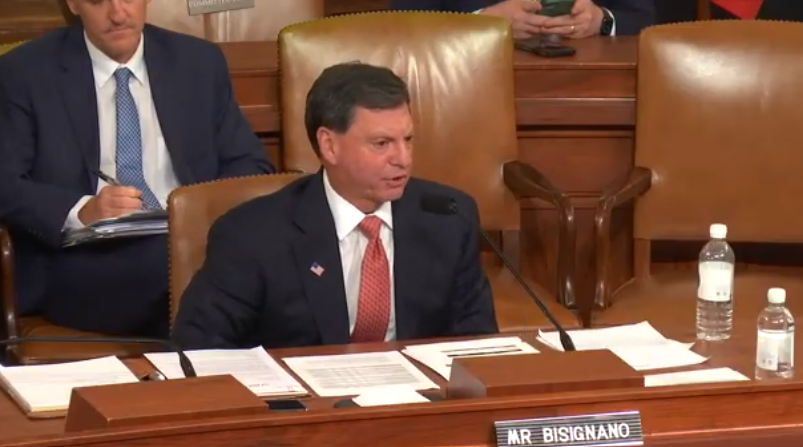On the heels of three straight years of record high enrollment, the 12th annual Affordable Care Act (ACA) Marketplace open enrollment season will be another opportunity for more people to gain coverage. It is also an opportunity for people already enrolled to make changes to their health plan. Here are ten things to know about the 2025 open enrollment period.
- Unsubsidized premiums are increasing modestly, but most enrollees won’t pay that. Premiums for benchmark silver plans, which are the basis for subsidy calculations, are increasing by 4% on average, while lowest-cost bronze premiums are up by 5%. Premium increases are steepest in Vermont, Alaska, and North Dakota, where unsubsidized monthly costs are growing by 10% or more. Meanwhile, low-cost plan premiums are falling in 9 states, including by double digits in Louisiana. (State-level data are here.) A Peterson-KFF Health System Tracker analysis found that rising hospital costs and increased use of GLP-1 drugs are among factors contributing to higher premiums. On average nationally, a 40-year-old’s benchmark silver premium would be $497 per month without a subsidy. However, the vast majority (92%) of Marketplace shoppers receive a subsidy, and with enhanced subsidies most of them can find a plan with a premium of less than $10 per month. Because these subsidies cap monthly payments at a share of an enrollee’s income, the vast majority of Marketplace enrollees will not have to pay a premium increase.
- This could be the last year of enhanced subsidies. Enhanced subsidies under the Inflation Reduction Act (IRA) are set to expire at the end of 2025. Initially introduced in the American Rescue Plan Act, these subsidies increased premium support for existing enrollees and expanded eligibility to those earning above 400% of the poverty level. These subsidies, which have driven the record-high enrollment in Marketplaces, will remain in place for the duration of 2025, but would require an act of Congress to extend them in 2026 or beyond. If these enhanced subsidies expire, the original ACA subsidies will remain in place but premium payments (net of subsidies) are expected to double or more in a number of states in 2026.
- Marketplace shoppers will have more choice of insurers. On average, across states, 9.6 insurers are participating on the ACA Marketplaces, which is higher than in any prior year (state data are here). In 2025, 97% of Healthcare.gov enrollees will have 3 or more ACA insurers, up from 78% of enrollees in 2021. Several insurers are entering into new states in 2025. For example, UnitedHealth Group is expanding into 4 new states and 119 additional counties in 13 of the 26 states where they already participate. Centene (Ambetter) also announced it is expanding into 60 new counties across 10 states. With ACA Marketplace signups reaching record highs and strong financial performance for participating insurers, the ACA Marketplaces have become a more appealing market than they had been in 2018, when insurer participation was at a low point.
- Open enrollment is from November 1, 2024 to January 15, 2025 in most states. In accordance with new federal rules encouraging states to standardize their open enrollment periods, the 2025 open enrollment period will now begin on November 1, 2024 in all states except Idaho, where open enrollment began October 15. Open enrollment will end on January 15, 2025 in most states, except Idaho (December 16, 2024), Massachusetts (January 23), California, New Jersey, New York, Rhode Island, and DC (all January 31).
- New states are transitioning to a State Based Marketplace. Georgia will be transitioning to a State Based Marketplace for the 2025 plan year. This will bring the total number of state-based marketplaces to 20. Illinois is scheduled to transition into a state-based marketplace for the 2026 plan year and will stop using the federal platform in November 2025. For now, Illinois residents should continue to use Healthcare.gov.
- The federal government is taking new actions to combat fraud. The federal government has received numerous complaints from consumers who have been the victims of fraud, where insurance brokers have signed them or switched their plans without their consent. The federal government has taken enforcement actions to combat this fraud (including suspending certain brokers) and has applied Healthcare.gov standards on web brokers and direct enrollment entities to State-Based Marketplaces.
- Changes to short-term plans are taking effect. The Biden Administration is reversing the Trump Administration’s expansion of short-term health insurance plans that are not ACA-compliant and can discriminate against people with pre-existing conditions. The new rules require that short-term plans be limited to 4 months total, and must now come with a consumer notice in all online and written marketing, enrollment application and other materials stating that the coverage “is NOT comprehensive health coverage.” Short-term plans are not sold on the ACA Marketplaces, but some consumers have reported feeling misled into believing they were buying comprehensive plans. A similar disclaimer notice must be included in materials for fixed indemnity policies sold to consumers off Marketplace. These are plans that pay a specific amount if someone is sick or hospitalized. Like short-term plans, fixed indemnity plans do not have to meet most of the ACA’s consumer protections. Written and online information must now say that this fixed indemnity coverage “is NOT health insurance.” While a recent lawsuit challenges the new notice for fixed indemnity plans, as of now it is still required.
- Special enrollment opportunities are changing. HealthCare.gov enrollees with incomes up to 150% of poverty will continue to have a year-round special enrollment opportunity, though this is optional for state-based marketplaces. However, the “Medicaid Unwinding” special enrollment period is ending November 30, 2024. In addition, starting in 2025, all consumers who choose an ACA Marketplace plan during a special enrollment period (whether a federal or state-based marketplace) will have their coverage begin on the first day of the month following their plan selection. (In the past, in some state-based Marketplaces, if a consumer chose a health plan during a special enrollment period after the 15th of the month, coverage began on the first day of the second month.)
- Deferred Action for Childhood Arrivals (DACA) recipients will be allowed to sign up for subsidized coverage through the Marketplace in 2025. A new Biden-Harris administration rule finalized earlier this year expands eligibility for DACA recipients by redefining “lawfully present.” Starting November 1, 2024, DACA recipients will be allowed to sign up for coverage through the Marketplace or through the Basic Health Program. They will have access to premium tax credits and cost sharing reductions, even if their income is below 100% FPL. There will be a 60-day special enrollment period starting on November 1, 2024 that allows newly eligible DACA recipients to sign up for coverage. Consumers who enroll during November 2024 can have their new Marketplace coverage begin as early as December 1, 2024. While there is pending litigation, DACA recipients can still enroll.
- Network adequacy rules must be met. Starting in 2025, federal Marketplace plans will be required to meet maximum appointment wait-time standards (e.g., no more than a 10-business day wait for a behavioral health appointment, a 15-business day wait for routine primary care appointments, and 30 business days for non-urgent specialty care appointments). These plans are expected to have a “secret shopper” survey conducted starting in 2025 to test whether in-network providers are meeting these appointment wait times for new patients seeking primary and behavioral health care.
Disclaimer: This story is auto-aggregated by a computer program and has not been created or edited by lifecarefinanceguide.
Publisher: Source link
Publisher: Source link










